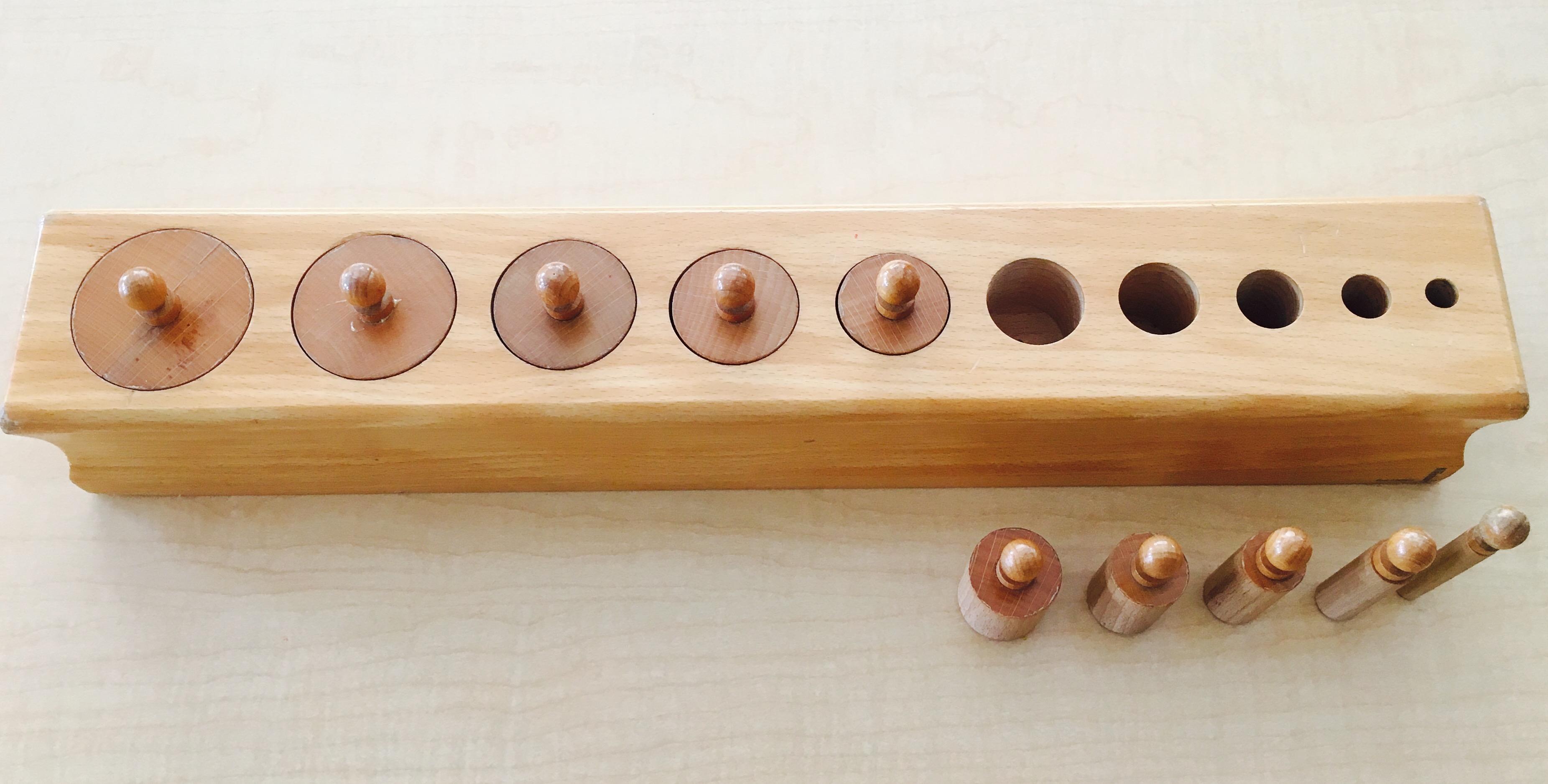“The senses, being the explorers of the world, open the way to knowledge”—Maria Montessori
The sensorial area of the Montessori classroom is often what one envisions when thinking of a Montessori classroom- it is full of beautiful, tactile, and sensorially interesting hands on materials. Some very well known materials include the pink tower, the cylinder blocks, and the red rods.
The sensorial area is founded on the idea that children learn naturally by exploring their senses. Think of a young infant who delights at touching the face of their caretaker, or of the older baby who learns about physical properties of matter by repeatedly dropping food from their high chair (much to the dismay of their caretaker) and delights in the variable noises and shapes each makes as it splatters on the ground. These children are learning about their environment through tactile, visual, and auditory feedback from their environment without any adult instructing them on what to do.
Montessori classrooms take this natural inclination to test, experiment, and explore the environment a step further by giving to the child a range of fascinating materials that are scientifically designed to refine the child’s visual, auditory, olfactory, tactile, and gustatory senses. Each of the Sensorial materials have an internal control of error which allow the child to freely explore the materials and discover the properties of each material completely independent of direct instruction.
Through exploration of sensorial materials (for example, the pink tower), children begin to make connections between sizes, shapes, textures, colors, tastes, and scents in their environment. These connections lead to the classification and organization of their intelligence, and eventually lay the groundwork for children’s explorations of math, physics, geometry and language.
Watch the Sensorial curriculum in action as explained by Anna Perry from the Seton Montessori Institute:
Back to Our ClassroomComments are closed.



Recent Comments